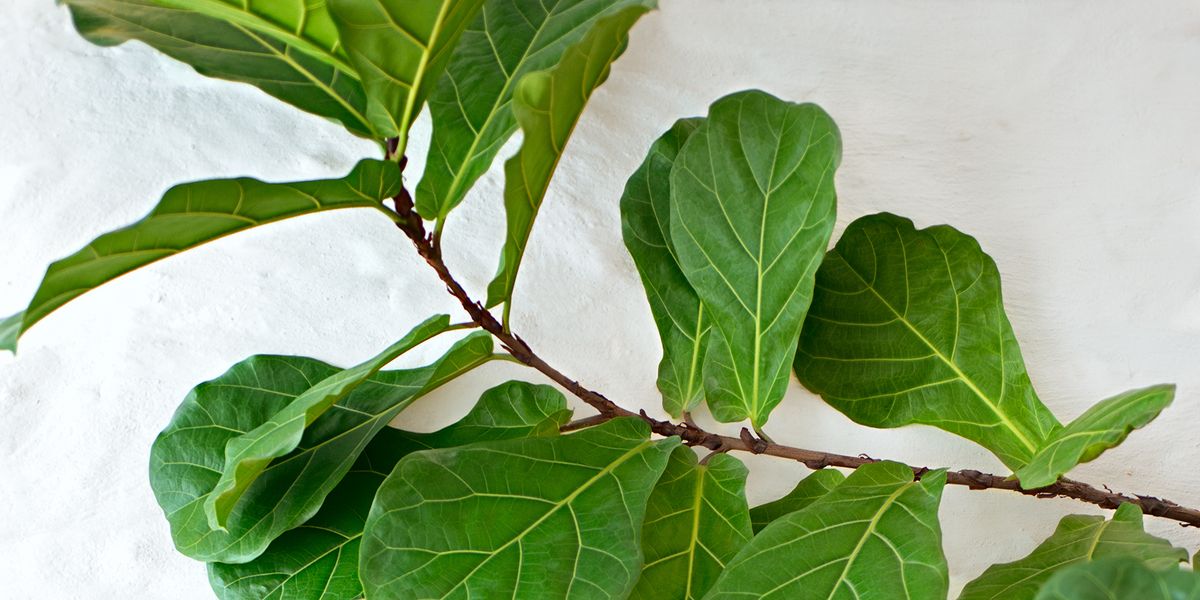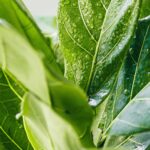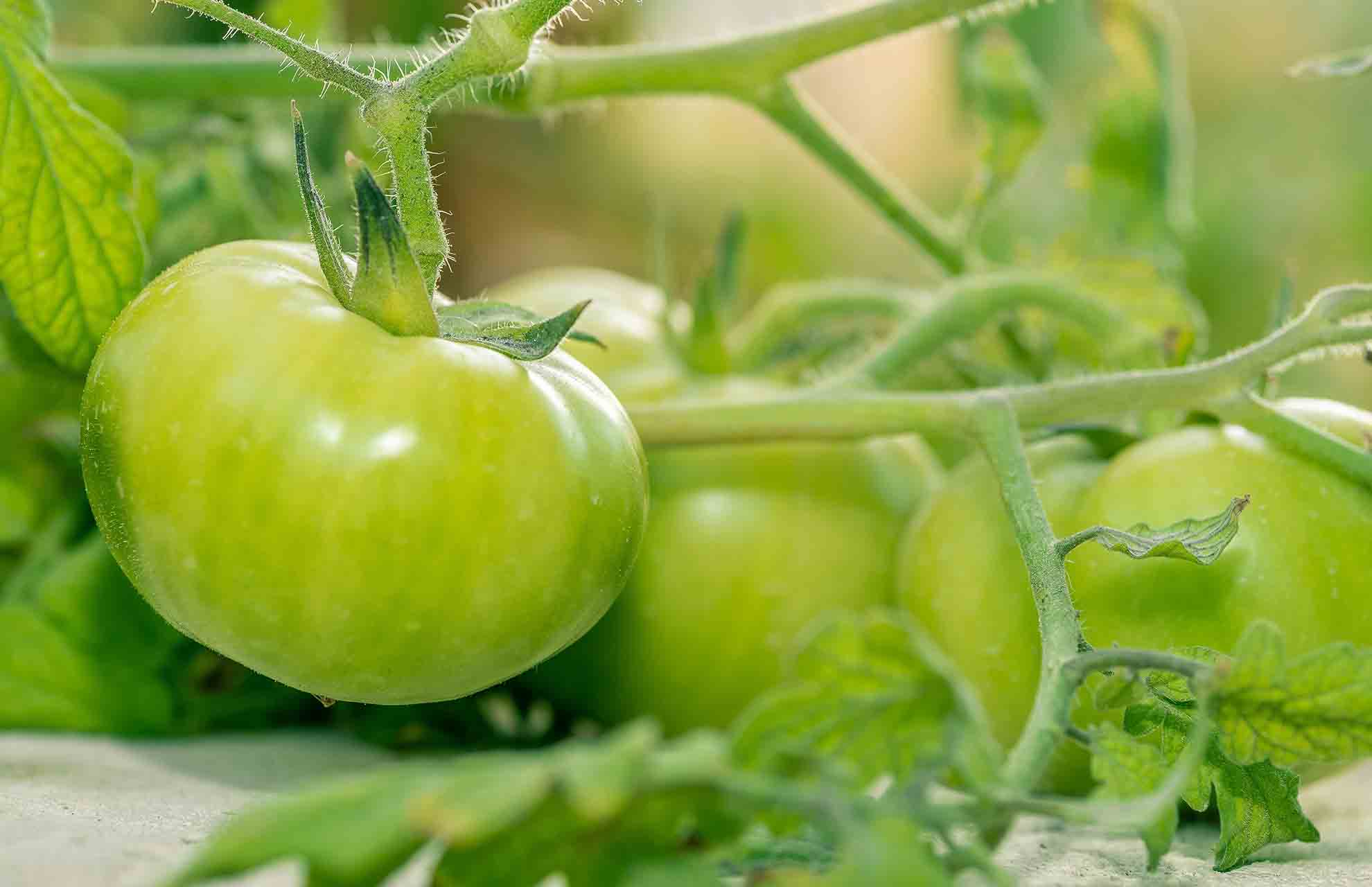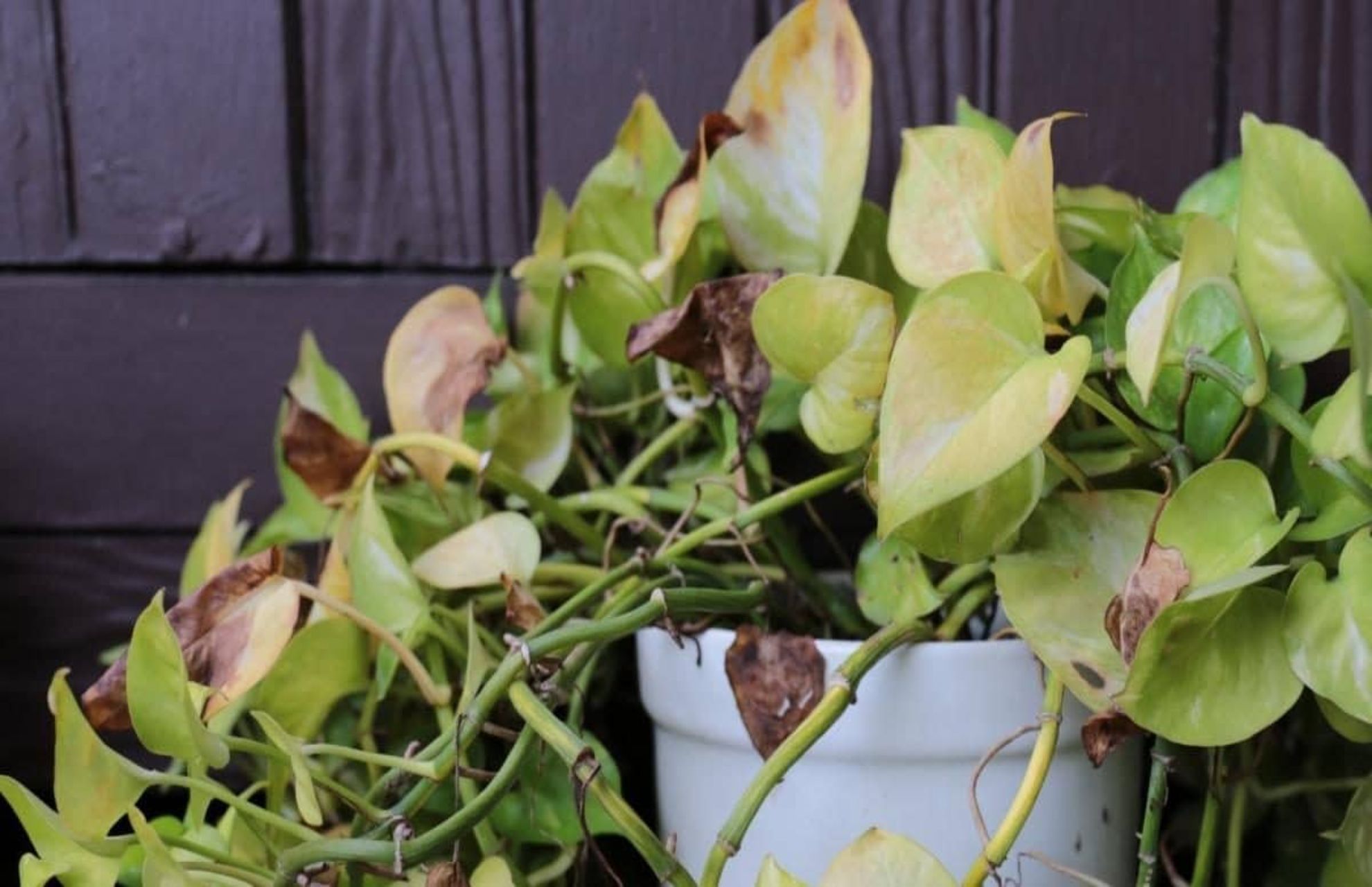The toxicity of fiddle leaf figs to cats, dogs, and people is a major concern for many fiddle leaf fig owners—or potential fiddle leaf fig owners.
The bad news is that fiddles are harmful to both pets like cats and dogs and humans. Fiddle leaf fig leaves, stems, and trunks exude an unpleasant white sap when cut, which you don’t want on your skin or in your digestive system!
The good news is that fiddle leaf figs are only mildly toxic; while they can cause disease and irritation of the mouth, throat, and stomach, intake will not result in life-threatening illness or death. The sap of a violin can also hurt or even blister the skin. (This is why using gloves when pruning or propagating your violin is essential!)
If you have pets that could nibble on the leaves of your violin, here’s what you should know and what to do if a pet ingests any part of your fiddle or gets the sap on its skin.
- What Are Fiddle Leaf Figs?
- Are Fiddle Leaf Figs Toxic to Your Pet Cats and Dogs?
- Causes Of Fiddle Leaf Figs Poisoning In Dogs And Cats
- What Part of the Fiddle Leaf Fig Is Toxic to Cats?
- How Toxic Are Fiddle Leaf Figs?
- Symptoms Of Fiddle-leaf Fig Ingestion In Cats, Dogs, Or Other Animals
- How To Keep Fiddle Leaf Figs Away from Cats and Dogs?
- What If Cats And Dogs Nibble on Fiddle Leaf Figs?
- More Common Houseplants That Are Toxic To Pets
- Pet-friendly Houseplants
- Is The Fiddle Leaf Fig Toxic To Humans?
- Can I Still Keep A Fiddle Leaf Fig In My House?
- Conclusion
What Are Fiddle Leaf Figs?
Even though they aren’t the easiest to care for, fiddle leaf figs are a very common houseplant. Since they are native to tropical climates, they require extensive specialized care to remain healthy. They can get quite big if they can develop in a healthy environment. They have large, gorgeously green leaves that grow to be quite large.
You’ll only be able to keep a fiddle leaf fig away from your pet for a limited amount of time because it can still grow to be up to 10 feet tall in a pot. You’ll want to know if it’s safe around your pet in case they were to try and eat it unless you can put it in a room where they can’t access it. You can check out more information we have on how to treat Brown Spots On Fiddle Leaf Fig.
Are Fiddle Leaf Figs Toxic to Your Pet Cats and Dogs?
In short, yes. If you have cats or dogs who could try to eat your plant’s leaves, a fiddle leaf fig might not be the best houseplant for you!
The leaves and stems of fiddle leaf figs have a thick white sap rich in calcium oxalate crystals. When swallowed, these crystals have sharp edges that can irritate the mouth, throat, stomach, and intestinal tract, as well as irritate or even blister the skin if it comes into contact with it and isn’t wiped off quickly.
If you have pets and a fiddle leaf fig, you must keep them from eating it or getting the sap on their skin or in their eyes.
Causes Of Fiddle Leaf Figs Poisoning In Dogs And Cats
When your dog consumes the entire or a portion of the fiddle leaf plant, fiddle leaf feed poisoning results. Additionally, the moment a leaf is chewed, the plant naturally defends itself.
The idioblast’s tip will break when your dog chews on the plant’s leaves or stem, allowing plant sap to enter the cell.
The tissues of the mouth, tongue, throat, and stomach are then penetrated by the calcium oxalate crystals, which they embed.
Your dog may experience immediate discomfort, aggravation, and additional gastrointestinal distress as a result.
The specific causes of poisoning are thus as follows.
- A calcium oxalate crystal injection is made into the dog’s soft tissues.
- The sap contains ficin, a proteolytic enzyme that makes your dog itch and develops dermatitis. Additionally, the proteolytic enzyme will cause gastrointestinal distress when swallowed.
- Both enzymes cause dermatitis, skin blisters, and digestive issues.
What Part of the Fiddle Leaf Fig Is Toxic to Cats?
Insoluble calcium oxalate is the poisonous component of fiddle leaf figs. When swallowed, these tiny needle-like crystals attach themselves to a person or animal’s mouth, throat, and stomach. Fiddle leaf figs are poisonous to cats, dogs, and even people because of this. The plant’s stems and leaves, as well as all of its crystals, are frequently visible.
Other indoor plants also contain this hazardous substance besides fiddle leaf figs. In reality, insoluble oxalates are present on the leaves, stems, and even sap of many home plants. Other plants that are poisonous for the same cause are listed below:
- Arrowhead
- Caladium lily
- Calm lily
- Evergreen Chinese
- Dieffenbachia
- Animal ear
These are some of the most typical indoor plants, while there are others that contain the same hazardous substance. By searching online for your particular plant, you may quickly determine whether your indoor plant has insoluble calcium oxalate crystals.
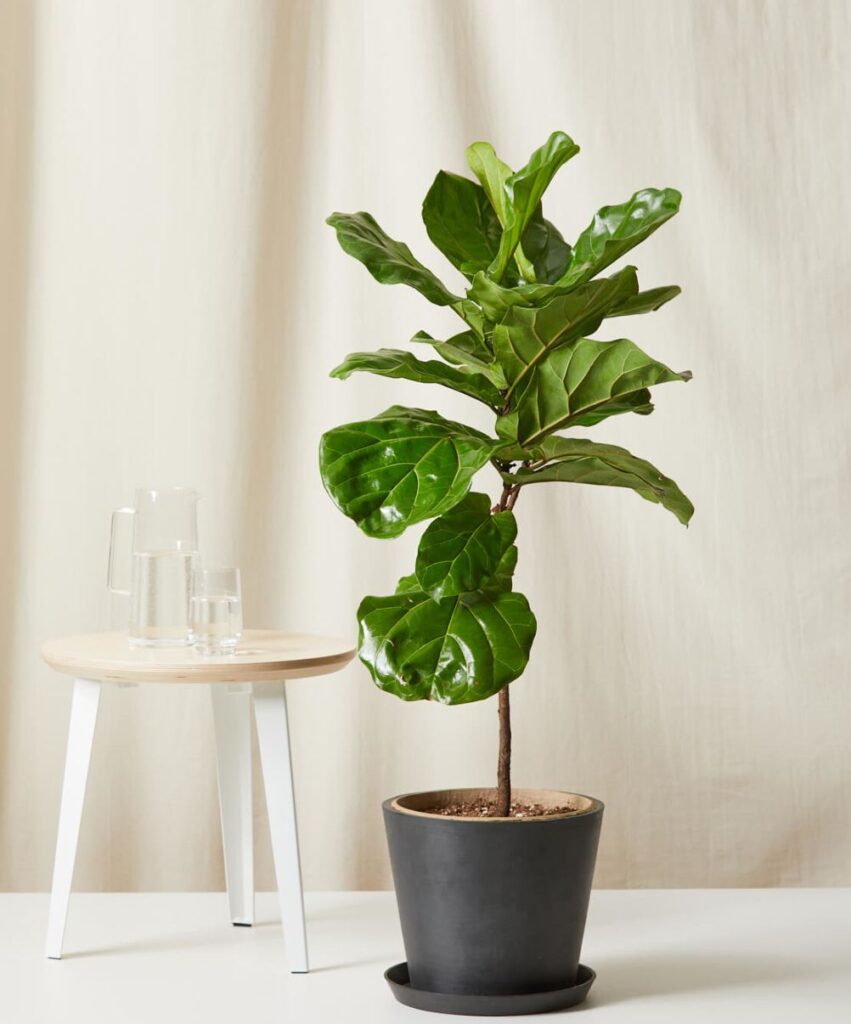
You may be interested in:
- Are Bromeliads Toxic To Pet Cats
- Are Air Plants Toxic to Pet Cats, Dogs, or Other Animals
- Is The ZZ Plant Poisonous for Cats, Dogs, or Other Pets
- Are Venus Fly Traps Poisonous To Cats
How Toxic Are Fiddle Leaf Figs?
For your pets, fiddle leaf figs may be slightly toxic. Depending on how big a bite your pet received, the toxicity’s impact will vary. However, the severity of their suffering depends on how much of them they consume.
If your pet displays symptoms like drooling, vomiting, or a swollen mouth but you haven’t seen them eat the plant, examine the plant to see if you can spot the spot where they bit it.
In order to handle the situation and treat your pet quickly, you must call the veterinarian right away if you see that your pet has taken a sizable bite or the symptoms seem severe.
Fiddle leaf figs are classified as having Class 4 toxicity, the least dangerous of the four toxicity classes. In addition to causing irritation, they also result in other issues that are manageable and treatable.
Symptoms Of Fiddle-leaf Fig Ingestion In Cats, Dogs, Or Other Animals
- Oral sores
- Stomach upset
- Diarrhea
- Vomiting
- Lethargy
- Dehydration
- Sores around the gums, tongue, and nose
- Gastrointestinal discomfort
- Runny poops
- Lack of energy
Contact your veterinarian right away if you suspect your cat or dog has consumed a fiddle-leaf fig. They might also suggest giving your cat or dog activated charcoal to help absorb any toxins in the gut in addition to bringing them in for an examination.
How To Keep Fiddle Leaf Figs Away from Cats and Dogs?
There are ways to keep the plant away from your cat, or your cat away from the plant if you already have a fiddle leaf indoors and don’t want to get rid of it.
The importance of location
Most essential, position the plant away from other raised surfaces like tables and chairs and in a corner. The cat could try to play with the leaves or perhaps eat them while sitting on the surface if the plant is too close to an elevated surface.
For the fiddle leaf fig, a vacant nook away from other furniture in your house can be the ideal spot. The fig will not only fill the empty spot with color and vitality, but the cat won’t have easy access to the plant either.
The Pot Is Cat Proof
The cat can still climb up on the pot and possibly play with the plant, even if you set the fiddle leaf fig at the optimal spot. Simply cat-proof the pot to stop this from happening. Garden matting or even chicken wire are options for cats. The material should simply be spread over the pot’s surface.
The cat can’t play in the soil or climb into the pot thanks to this substance. The material also has adequate ventilation to ensure that the soil receives the air and water it needs to support a healthy plant.
Read: What Is The Best Soil For Fiddle Leaf Fig Trees?
What If Cats And Dogs Nibble on Fiddle Leaf Figs?
If you are aware that your cat has consumed a fiddle leaf fig, you should call your veterinarian right away. Call the ASPCA at (888) 426-4435 if you don’t have a veterinarian on hand.
A cat that has consumed a fiddle leaf fig will be treated by having its mouth cleaned out with distilled water. This distilled water will lessen further oral irritability and stop the cat from ingesting additional pollutants.
How Do I Treat A Cat With Sap On The Skin?
If you are able to, begin by thoroughly washing the affected area with water. Another option is to use dishwashing soap (like Dawn) or mild pet shampoo to clean the area.
You should still speak with your veterinarian as soon as you can, though. Your cat might hurt herself if she scratches excessively if the calcium oxalate crystals are irritating her skin.
Diagnosis By Yourself
As we all know, dogs are fascinating animals. They have the propensity to eat almost anything. It implies that they significantly increase the likelihood of swallowing any kind of plant kept in your living room or yard.
You should be concerned right away if your dog is acting strangely or exhibiting any of the symptoms mentioned just above in this article. It’s because your living room or backyard may contain a variety of plants. Even though fiddle leaf figs aren’t particularly toxic to animals, there may be other plants that are.
In order to be more precise, you might check the area to see what plant your dog has eaten. You might get some ideas from this.
However, keep in mind that you should never make your dog throw up without first talking to your veterinarian. As a result, this could make things worse by starting another chemical reaction. Defer visiting your veterinarian before taking any over-the-counter medications.
The first thing to do is to keep your composure. Your cat might become anxious and worsen its symptoms if they hear you screaming or running around in a panic. You can treat your cat at home because the insoluble calcium oxalates are the cause of the mild toxicity. After a day, the signs and discomfort should subside.
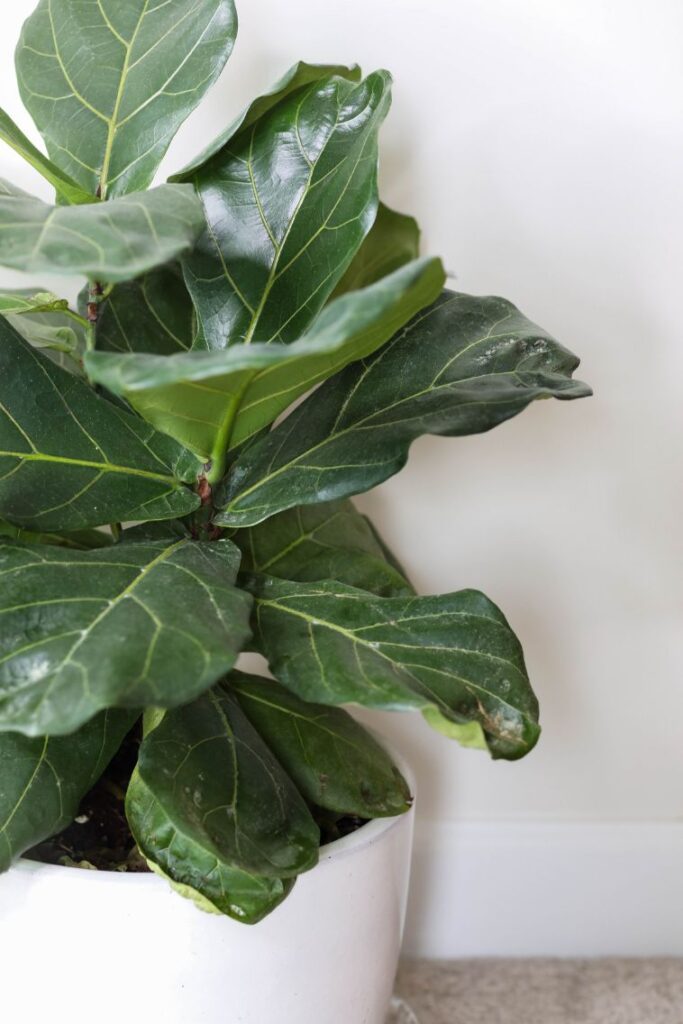
While your cat works on getting some rest, you can follow these easy steps.
- Provide Plenty of Water. Your cat could quickly become dehydrated if it is having diarrhea or vomiting. The worst thing that can happen is dehydration, not the fiddle leaf fig.
- Allow your cat to consume milk. Milk, along with any food or drink with a high calcium content, will help dissolve the oxalates and relieve some of your cat’s discomfort
- Be certain that your cat is at ease. Last but not least, ensure that your cat is at ease. The healing process will go more quickly if you can distract them from their discomfort.
Your cat will fully recover in a day, all things considered. Fiddle leaf fig poisoning does not cause death and has no known long-term effects.
Make a note of how much of the plant your cat consumed, and bring their medical history with you. Your veterinarian will probably make them vomit so that they can undergo some tests. In this case, it’s likely that your cat will need to spend the night somewhere for observation. Even though going to the vet because of the fiddle leaf fig is uncommon, it does happen occasionally, so it’s best to always be ready for the worst.
Diagnosis By Professional Veterinarian
It’s unusual for your dog to have acute, severe lead poisoning, as was already mentioned. Nevertheless, you still need to take your dog to the vet. You will be able to determine your dog’s level of toxicity in this manner.
The vet will then question you regarding the plant that your dog ate. However, given that your living room is filled with so many different plants, it’s also possible that you are unsure of which one your dog has eaten.
But if you are certain that your dog ate a fiddle leaf fig, the vet will find this to be very helpful in making a diagnosis. The veterinarian will now assess your dog based on the clinical symptoms and your suspicion that he consumed fiddle leaf figs.
You need not be concerned even if you are unsure of what plant your dog consumed. In order to diagnose the animal and prescribe treatment, the veterinarian will gather enough information.
Your dog will have a blood count, a biochemistry profile, and a urinalysis performed by the expert. This is carried out to closely examine the state and organ function of the canine system.
As a result, the veterinarian will gather enough information to diagnose the animal and recommend treatment.
Dangerous enzymes made from plants will also be checked for in the contents.
More Common Houseplants That Are Toxic To Pets
Not all plants can harm your feline friend, including fiddle leaf figs. Lilies, aloe vera, philodendrons, and snake plants are some well-known houseplants that are poisonous to cats.
Due to the presence of compounds that can result in kidney failure, lilies pose a particular risk to cats. A cat or dog can die from even a small quantity of lily petals or leaves. Make sure your cat or dog cannot access any lilies if you keep them as indoor plants.
Even though it is not a true lily, the peace lily contains those bothersome calcium oxalate crystals. Consequently, it may result in the same issues that a fiddle leaf fig tree may.
Another plant that can harm cats is aloe vera. Vomiting and diarrhea may be brought on by the sap’s chemical composition. So your cat might become ill if she consumes aloe vera sap.
An additional indoor plant that can irritate the mouth is the philodendron, the mouth, tongue, and lips. Your cat or dog might begin drooling if she nibbles on a philodendron leaf. She might also have difficulty swallowing.
And lastly, cats or dogs are poisoned by snake plants. Compounds in the sap have been known to induce nausea and diarrhea. So your cat might become ill if she consumes any snake plant sap.
Check out the ASPCA database for a more comprehensive list of poisonous plants. You can search for plants by name or filter results to only show those that are poisonous to cats, dogs, or horses.
Pet-friendly Houseplants
Not every plant is harmful to cats. There are many indoor plants that are fortunately risk-free for cats, so your feline friend can enjoy them without any issues. Spider plants, African violets, calathea, and rubber plants are a few plants that are safe for cats.
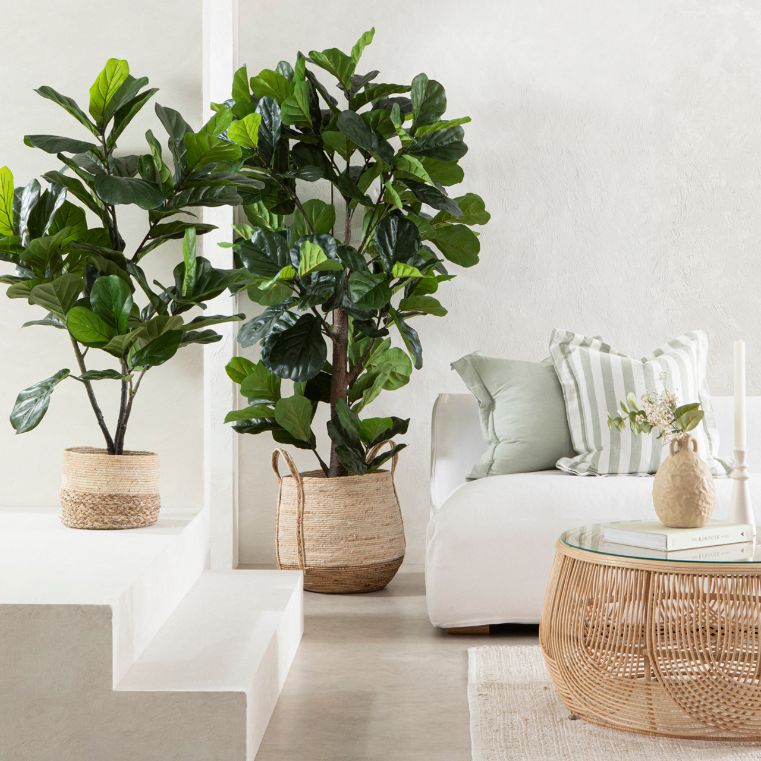
For households with cats, spider plants are a fantastic option. It requires little maintenance and is safe for cats to eat.
Another excellent option for cat and dog owners is an African violet. These attractive plants are not harmful to cats. Cats or dogs can safely eat calathea, a stunning tropical plant. Compared to some other plants on this list, they are a little more difficult to grow, but the effort is well worth it.
And lastly, rubber plants are a great option for homes with cats or dogs. They require little maintenance and do not harm cats. Any of these plants would be a great option if you’re searching for a pet-friendly plant for your house.
Is The Fiddle Leaf Fig Toxic To Humans?
Fiddle-leaf figs do not kill infants when consumed, but they can upset the stomach. The infant may not develop oral sores depending on their age and whether they have teeth. Only when the plant is chewed do the ragged crystals in the sapogenin become visible.
Call your doctor or Poison Control right away for guidance if you believe your child has consumed a fiddle-leaf fig.
Babies who consume fiddle-leaf figs are generally not thought to be at risk of harm. However, if you think your baby may have consumed a fiddle-leaf fig, it’s always a good idea to seek professional medical advice.
Can I Still Keep A Fiddle Leaf Fig In My House?
You’re welcome to keep a fiddle leaf fig in your home because it poses no threat to your cat’s life. Additionally, you ought to take action to discourage your cat from ever wanting to chew on the plant in the first place.
The best course of action is to make sure that your cat receives plenty of love and playthings. Cats primarily attack houseplants out of boredom, so if they’re not bored, they won’t have an excuse to bother your plants.
If your cat has a reputation for chewing on plants, try adding more cat-friendly plants to your home as a diversion. Both online and in pet stores, you can find a sizable variety of these plants. Your cat is more likely to attack these plants than your tree because of their aroma, flavor, and even nutritional value.
You’ll need to move your tree into a room that your cat isn’t allowed in if you feel like none of these other options are working and you can’t bring yourself to get rid of your tree. If your cat tends to have free rein in the house, try planting it outside instead of in a bedroom or study.
The fiddle leaf fig may not be for you, of course, since sometimes the best prevention is to never have the possibility of getting your cat ill.
Fiddle leaf fig isn’t the worst of the poisonous plants we’ve discussed, but it’s still unpleasant for your cat. Your feline friend might make an attempt to catch it because each cat is unique.
Other times, they might not show any concern at all. Always use caution to ensure the safety of both your plants and your cat before bringing any new, potentially dangerous plants inside.
Conclusion
Fiddle leaf figs, as lovely as they are, are hazardous to cats, dogs, and other animals due to the insoluble calcium oxalate crystals. If ingested, these crystals can become lodged in the cat’s mouth, throat, and stomach.
Because of how dangerous this plant is, it is advised to avoid having it in your home and instead choose cat-friendly plants. If you already have a fiddle leaf fig, be cautious in cat-proofing it to keep your cat from devouring it.
If you cat-proof the fiddle leaf fig, the cats are unlikely to eat it because cats don’t eat plants in the first place, but it’s not impossible. If your cat does get a hold of the fiddle leaf fig, contact your veterinarian right away to get your pet the attention it needs.

